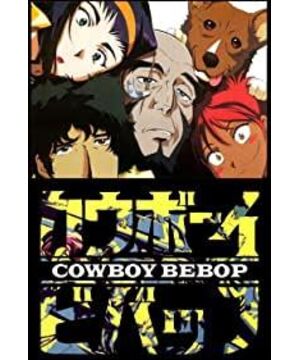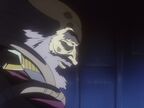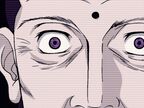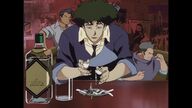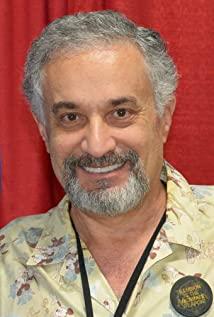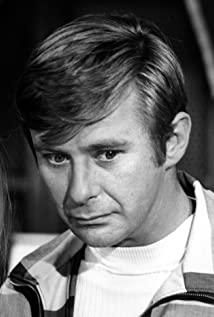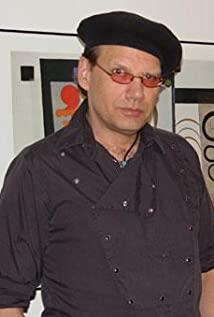●He can call the "movie theater version" only [kid's story] ([小故事]) and [Detective story] ([Detective story]) in the animation version of The Matrix, etc. Countable works. Moreover, [Heaven’s Fear] is actually just the rotten tail of [cowboy bebop]’s compromise with business, and [Kid’s story] and [Detective story] are only part of the animated short film that pays tribute to the Matrix, which lasts more than ten minutes.
●Nevertheless, it is our fault to classify him as an animation director in the general sense of Japan.
Shinichiro Watanabe is in an awkward situation. His works never get the follow of the label-style "Japanese anime fans", and they hardly touch his animations. He is not like Hayao Miyazaki, Katsuhiro Otomo, and Mamoru Oshii, who are highly regarded in the international film industry. Although almost every one of his stories can be compared with a complete movie, he stubbornly uses movie techniques to make 26 episodes of cartoons. So his name rarely appears on either side of these two types of information propaganda, but this does not prevent him from enjoying himself.
He said, “If you only perform a reduced reproduction within the acceptable range of anime enthusiasts, the viewers will feel tired, and the producer will gradually go into a dead end.” So he has to do something “outward, such as suddenly giving it to A person living in Morocco will find interesting works when he sees it." But don’t get me wrong, he does not mean to start animation from a wider audience. Shinichiro Watanabe has never been the god of the audience. On the contrary, in terms of art, he is an extreme individualist and a casual genius. He used his works to do purely "Watanabe" things: he let Spike beat Bruce Lee's boxing skills to pay tribute to the kung fu star; he called the restaurant in his film "Woody's Ice Cream Parlor" and appeared in it. The character image is also somewhat similar to Woody Allen ([cowboy bebop] Chapter 5 "Heavy Metal Queen"); he uses the classic tracks of the Rolling Stones and Queens as his own title ([cowboy] Chapter 6 "sympathy" "for the devil" and "Bohemian Rhapsody" in Chapter 13); he used the plot to ridicule Shisun Hishawa and the sunflower inspiration he brought to Van Gogh ([samurai champloo] Chapter 5). And he didn't have Luc Besson's ambition to only make 10 films in his lifetime. He made up for the movie version of Macross, which he co-produced when he debuted, but only 6 works have come out in the past ten years. He is doing his own things in seclusion, and it is difficult for him to be affected by outside influences. From [cowboy bebop] to [Chaos Samurai], he doesn’t care about the changes in the themes and styles of his works and may even make the audience fall. Bench. He rarely appeared in front of the media, but only said that "the animation industry has begun to homogenize" and naturally smeared individualism in his works.
Reverse the confusion of sentient beings
Watanabe Shinichiro's works, like his new title [Chaos Samurai], are often a hodgepodge of various elements. [cowboy bebop] is a western film that takes place in space, with a strong flavor of Hong Kong gangster movies. And [Chaos Samurai] even mixes hip-hop with Bushido, Japanese period dramas and American road movies, making it a mess. When you see a piece of moldy pine board beef transformed into a new type of cosmic virus, and finally waltzed in space with the refrigerator that had been hiding it for a year ([cowboy bebop] Chapter 11 "toys in attic"), or In the Edo period, a baseball game that even animals participated in disturbed. Due to the limited strike zone for dogs, the early American invaders were finally driven out of the island of Japan unexpectedly ([Chaos Samurai]), and even a graffiti showdown between the samurai. The woman who became fat after eating, the Pingshi zombies who dug up treasures for more than 500 years, and the oncoming woodman who hummed raps and told you anecdotes... Under normal circumstances, of course you would think that this is an incomprehensible logic. confusion. But Shinichiro Watanabe wants to involve you in his world. Anything is possible. If he wants to, he can break all common sense, "I only need to make good works." It is this kind of opportune drama that constitutes the most gratifying quality of his work: a kind of casual confusion. It is precisely this kind of confusion that gives it the power to reverse sentient beings.
The fact is: once all beings are turned upside down, the unthinkable becomes a matter of course. This is the only logic you need when watching Watanabe's animation.
Film language
Compared to animation works, Watanabe Shinichiro's use of images can be said to be incredibly complicated. The use of a large number of montages and the flickering and alienation of light and shadow are completely derived from the operating methods of the movie. [cowboy bebop] At the end of Chapter 11, the space waltz is directly derived from the film master Kubrick’s [2001: A Space Odyssey], and the inferior lens transfer and accurate grasp of the music, he only uses each individual person and The combination of cold appliances creates one of the most romantic shots in [cowboy]. [Chaos Samurai] In the beginning, Ren and Wuhuan fight scenes in different locations. The MTV-style bold switching technique may surprise many unprepared audiences. The gray and white picture in [Detective story] is full of texture. Compared with his peers, Watanabe's accurate grasp of light and shadow is the best in the animation industry. This cinematic language of images not only cooperates with the various weird coincidences in his story, but also brings the audience into an alienated way of thinking. The long-shot close-up of fish eyes in [Chaos Samurai] conveys the picture. If a new perspective of the earth.
It is said that after the first episode of [cowboy bebop] got the TV station, he was refused outside the door on the grounds that it was not good to broadcast on the ground. As for the industry's evaluation of "works that are different from popular animation styles, they are adventurous works", he doesn't care much. It is with the help of the overwhelming world and flashing pictures in the bloodshot vision of drug addicts in this episode that Shinichiro Watanabe made it clear to us from the beginning: what he did was definitely not an animation in the traditional sense. To be precise, these are some works that are more inclined to movies.
Haruki Murakami's narrative
There is no doubt that Shinichiro Watanabe has his own style. He prefers the combination of two men, a woman, and a long-haired animal (of course, in [cowboy bebop], the soft-bodied child Edo is also added), so he branded the work labeled "Watanabe" Zhong tirelessly tells stories through this combination. And behind all these floating and absurd adventures, he was actually speaking purely personal things in his life. This kind of narrative style reveals the idle energy of Murakami Haruki from the bones: because it doesn't matter what the world is like, only the individual's feelings and choices are worthy of attention. This is not only reflected in the way the authors tell stories, but also immersed in the nerves of the entire story.
So when Haruki Murakami kept chanting "The Great Gatsby" ("Norwegian Forest") through another "Watanabe", it was undoubtedly his own favorite work; also when Edo picked one back. The basket of psychedelic mushrooms caused the members of BEBOP to fall into strange hallucinations ([cowboy bebop] Chapter 17 "Mushroom Samba"), and they fell into a group of zombies singing harmony because they robbed wild mushrooms ([ Chaos Warrior]), we almost nakedly saw Watanabe Shinichiro’s preference for mushrooms. Similar situations are always hitting your forehead. He tells you "a woman who can eat is a good woman", and then the people in the story smoke, make money, eat, and kill their lives casually. They are almost stubborn at the end of their will-in the end, Spike, regardless of his choice, goes after the woman and the end ([cowboy bebop]) he believes, and benevolence, no magic and wind hit the road alone ([Chaos Samurai])-but you After sighing, I still feel that things should be the case. All because this is just the director's own story.
And he also said, "There is not much difference between people. You have to create some works that can touch the most fundamental human beings." So what can you do? Just follow the road.
View more about Cowboy Bebop reviews


